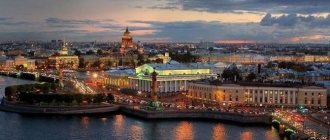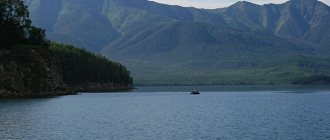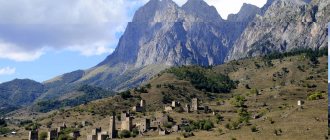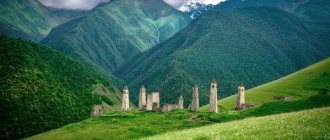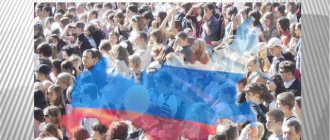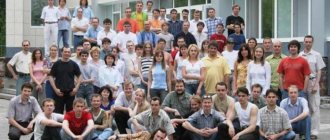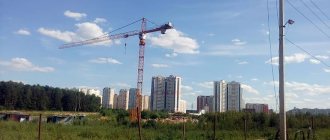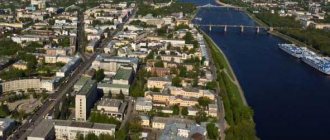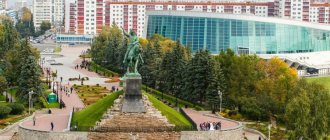General information and history
Balashikha is located near the eastern border of Moscow.
It is the largest city in the Moscow region. The total population of Balashikha was (excluding the city of Zheleznodorozhny, which was included in its composition in 2015) 247,075 people. After a significant expansion of the city in 2003-2004, the distance between its western and eastern borders became nineteen kilometers, and between the northern and southern - sixteen kilometers. The Gorenka and Pekhorka rivers flow through the city. There are nine railway stops in the city. For example, Balashikha, Gorenki, Zheleznodorozhnaya and, partially, Kupavna. Main highways: Shchelkovskoe highway (A103), Entuziastov or Gorkovskoe highway (M7) and Nosovikhinskoe highway.
Balashikha in the past, since its inception, was the center of the textile industry. In the 2000s, two main factories were liquidated.
The city was founded in 1830.
In 1925, the “Union” settlement was built to house workers of the fifth factory named after G.V. Chicherin and the first factory named after A.I. Rykov. Three years later, these villages were united into the workers' village of Balashikha. In 1929, it entered the Reutovsky district.
Ten years later, the workers' village of Balashikha officially became a city. At that time, 40,000 inhabitants lived in it.
After 1945, Balashikha actively developed industrially.
Popular message topics
- Mosses
Mosses are very old and interesting plants. They are the ones that remind you of that distant time when everything was covered with impenetrable green plants. If you walk through a forest where the entire ground is covered with these plants, you get the impression - Beavers The
beaver is considered the largest rodent in nature that lives along rivers and lakes. This animal gained its fame thanks to its ability to build strong dams and swim well. Beavers are common in Eurasia and North America. - Magnolia flower
Magnolia is one of the oldest plant species. Scientists have found the remains of these flowers, which are more than 140 thousand years old. This plant has the appearance of a shrub or tree and has fairly large leaves, reaching up to one meter in length.
Districts of Balashikha
In 2003, the dacha village of Saltykovka, the village of Gorbovo, the village of Lukino, the village of Nikolsko-Trubetskoye, the dacha village of Nikolo-Arkhangelsky, the village of Pehra-Pokrovskoye, the village of Novaya, the village of Nikolsko-Arkhangelskoye and the village of Bezmenkovo joined Balashikha. And next year - the village of Shchitnikovo, the village named after. The First of May and the village of Abramtsevo.
Microdistricts: 1 May, Aviatorov, Balashikha-1,2,3, Balashikha-Park, VNIIPO, Gagarin (Experimental Field), Dzerzhinsky, Zarya, Mirsky proezd, Lesnoy Gorodok, Nikolsko-Arkhangelsky, Novy Svet, Pervomaisky (28 microdistrict) , Field of Miracles, Radio Center, Saltykovka (quarters Akatovo, Zvorykino, Novoselki, Trudkoopstroy, Serebryanka), Severny, Severny-2, Fabrichny, TsOVB, Yantarny and Yuzhny.
Quarters: Abramtsevo, Bezmenkovo, Gorbovo, Losiny, Lugovoy, Lukino, Nikolsko-Trubetskoye, Novsky, Pehra-Pokrovskoye, Sokolovka, Khomutovo and Shchitnikovo.
Geography
The area of the territory of the municipality has been since January 2015 - with the addition of the abolished urban district of Zheleznodorozhny - 244.18 km² or 24,418 hectares. Previously - 218.59 km² or 21,859 hectares (including the area of the city of Balashikha - 3872 hectares, that is, 17.7%).
The urban district of Balashikha borders on:
- the city of Moscow (in the west along the Moscow Ring Road),
- Mytishchi urban district (in the north-west),
- Pushkinsky district (in the north),
- Korolev urban district (in the north),
- Shchelkovsky district (in the northeast),
- Noginsk district (in the northeast and east),
- Ramensky district (in the south),
- Lyubertsy district (in the south),
- Kosino-Ukhtomsky and Novokosino districts of Moscow (in the southwest),
- urban district of Reutov (in the southwest).
The territory of the urban district surrounds the Moscow Vostochny district on all sides.
Population of Balashikha for 2022. Number of residents of Balashikha
Data on the number of city residents are taken from the Federal State Statistics Service. The official website of the Rosstat service is www.gks.ru. The data was also taken from the unified interdepartmental information and statistical system, the official website of EMISS www.fedstat.ru. The website publishes data on the number of residents of Balashikha. The table shows the distribution of the number of residents of Balashikha by year; the graph below shows the demographic trend in different years.
Links to official documents and resources on the population census are marked with a [*] sign; when you hover your mouse, you will see the title of the document.
| Number of residents of Balashikha | Years |
| 178,962 people | 2006 |
| 184,900 people | 2007 |
| 188,700 people | 2008 |
| 192,837 people | year 2009 |
| 215,494 people | 2010 |
| 215,500 people | 2011 |
| 221,804 people | year 2012 |
| 235,336 people | year 2013 |
| 247,075 people | year 2014 |
| 260,704 people | 2015 |
| 428,400 people | 2016 |
| 450,771 people | 2017 |
| 468,221 people | 2018 |
| 490,047 people | 2019 |
| 507,366 people | 2020 |
Approximately 16-17 million people live in Mregion. It is also part of the Balashikha-Lyubertsy agglomeration, with a population of 898,500 people, which includes Lytkarino, Zheleznodorozhny, Dzerzhinsky, Reutov, Kotelniki and settlements of the Lyubertsy region.
Dacha villages
When laying a railway track from Moscow to Nizhny Novgorod near Balashikha in 1863, a stop called Saltykovka was built. Because the initiator of its construction was Prince Pyotr Saltykov.
After the organization of railway communication, rapid construction of country houses and dachas began. One of the dacha villages was named Novo-Sokolniki. The neighboring village, in which mainly railway workers lived, was named Saltykovka, after the name of the stop. At the end of the 19th century, both of these settlements merged and were then called Saltykovka.
In 1893, a large plot of land in the vicinity of Balashikha was acquired by landowner N. N. Kovalev. He ordered clearings to be cut in the forest, divided the territory into small plots and sold them for dacha development. Such transactions with land near Moscow, reminiscent of wholesale purchases and retail sales, brought in solid income in those days.
The village of Saltykovka in the last quarter of the 19th century began to enjoy great popularity among people of intelligent professions who settled there for the summer. Many famous writers and journalists, scientists and public figures, actors and artists settled here. For some time, the unsurpassed landscape artist I. I. Levitan lived in Saltykovka.
Compound
The Balashikha urban district includes 13 settlements.
| № | Locality | Type of settlement | Population |
| 1 | Balashikha | city, administrative center | ↗490 047 |
| 2 | Dyatlovka | village | ↗196 |
| 3 | New Miletus | village | ↘620 |
| 4 | Pavlino | village | ↗96 |
| 5 | Pestovo | village | ↗135 |
| 6 | Poltevo | village | ↗264 |
| 7 | Purshevo | village | ↘2055 |
| 8 | Rusavkino-Popovschino | village | ↗93 |
| 9 | Rusavkino-Romanovo | village | ↗171 |
| 10 | Sable | village | ↗240 |
| 11 | Fedurnovo | village | ↘1814 |
| 12 | Fenino | village | →156 |
| 13 | Black | village | ↗4047 |
Until 2004, rural settlements of the modern urban district were part of the Chernovsky rural district of the Balashikha district.
Attractions. Architecture
See also: Balashikha § Attractions
On the territory of the urban district there are:
- the former estate of the Razumovskys Gorenki (now the Moscow regional sanatorium for extrapulmonary forms of tuberculosis “Red Rose”; the main building was built by the architect A. A. Menelas in the second half of the 18th century) with a landscape park (previously the largest botanical garden in Russia was located here);
- in Balashikha - the former Golitsyn estate Pehra-Yakovlevskoye with a rotunda church (1786);
- Troitskoye-Kainardzhi, the former estate of Field Marshal Rumyantsev-Zadunaisky;
- Museum of History and Local Lore in the city of Balashikha.
- Museum of the Air Defense Forces with a unique exhibition.
- Former estate of the Razumovskys Gorenki
- Trinity Church in the Trinity-Kainardzhi estate
> Transport See also: Balashikha § Transport
- highway Moscow - Nizhny Novgorod (Gorkovskoe highway)
- Nosovikhinskoe highway
- Schelkovskoe highway
Local government
In accordance with Decree of the President of the RSFSR dated August 22, 1991 No. 75 “On some issues of the activities of the executive branch in the RSFSR,” the executive committee of the Balashikha City Council ceased its activities, and its functions from January 4, 1992 were transferred to the created Administration of the Balashikha District.
The head of the Balashikha urban district is Sergei Gennadievich Yurov (2017).
Chairman of the Council of Deputies of the Balashikha City District - Gennady Vladimirovich Popov (2017).
The procedure for electing the head of the city district since 2011
On February 8, 2011, the Council of Deputies of the city district made a decision according to which the Charter of the city. Balashikha a number of changes were made. The most serious amendment was the one concerning the procedure for electing the head of the city district (abolishing his popular election).
The head of the city district is elected by the Council of Deputies of the city district from among its members for the term of office of the Council of Deputies of the city district, which decided to appoint a person to the position of head of the city district.
The head of the city district is considered elected if more than half of the established number of deputies of the Council of Deputies votes for him.
The head of the city district acts as the chairman of the Council of Deputies of the city district. (Art. 25 part 2)
The Council of Deputies consists of only 25 deputies (with a population of about 250,000 people in the urban district). Thus, as was noted by a number of speakers at the hearings of the Draft Decision of the Council of Deputies of the Balashikha Urban District “On Amendments to the Charter of the Balashikha Urban District,” there is a usurpation of power and the establishment of an autocratic regime in Balashikha, with the further development of kleptocracy throughout the district. It was also stated that the exclusion of Balashikha residents from direct elections of the Head of Balashikha is unacceptable and violates the democratic principles of the Russian Federation. Despite all the objections, the decision was eventually made.
The current procedure for electing the head of a city district
According to the charter of the Balashikha City District in force for 2022, the Head of the Balashikha City District is elected for a term of 5 years by the Council of Deputies of the City District from among the candidates presented by the competition commission based on the results of the competition for the selection of candidates for the position of Head of the City District, and heads the Administration of the City District.
A citizen of the Russian Federation who has reached the age of 21 can be elected as the Head of the City District.
The procedure for holding a competition to select candidates for the position of Head of the City District is approved by the Council of Deputies of the City District. The procedure for holding a competition must provide for the publication of the terms of the competition, information about the date, time and place of its holding no later than 20 days before the day of the competition
Nature
Losiny Ostrov National Park
The urban district of Balashikha is located within the Meshchera Lowland and is a sand and pebble plain of glacial origin with a slope to the east. The soils are mostly sandy, soddy-podzolic, and in some places podzolic-boggy.
The main river of the city district is the left tributary of the Moscow River Pekhorka, which forms several large and picturesque ponds within the city limits. The Gorenka River flows into it (as a result of incorrect installation of a road sign on the Gorky Highway in recent years, it has been mistakenly called Chernavka), which currently flows from Lake Mazurinskoe, located north-west of the city. The river is connected by a special canal to the “bucket” reservoir at the Eastern Waterworks. This canal discharges excess Volga water coming to the station from the Akulovsky hydroelectric complex, thereby flooding the Pekhorka and Moskva Rivers.
In addition to rivers, there are numerous lakes in the urban district:
- Lake Baboshkino
- Lake Maryino
- Lake Yushino (second)
- Lake Bezmenovsky quarry (Kozlovo, third)
- Mazurin Lake (in 2010, water was discharged from sedimentation tanks located nearby)
- Several smaller lakes
Balashikha is surrounded by forests, mostly mixed. From the west - spruce-broadleaf, from the east - pine-broadleaf. There is a lot of woody vegetation within the city itself: forests wedge into all the main areas of Balashikha.
Around the city, in a ring, there are ancient manor parks. From the south there are the parks of Gorenok and Pekhra-Yakovlevsky, Saltykovka, in the north - the park of the Pekhra-Pokrovskoye estate. In each of these parks, plants were planted that were not found in the wild in these places. Many of them settled down well in their new place. Until now, there are introduced plants around Balashikha - plants brought here by humans.
